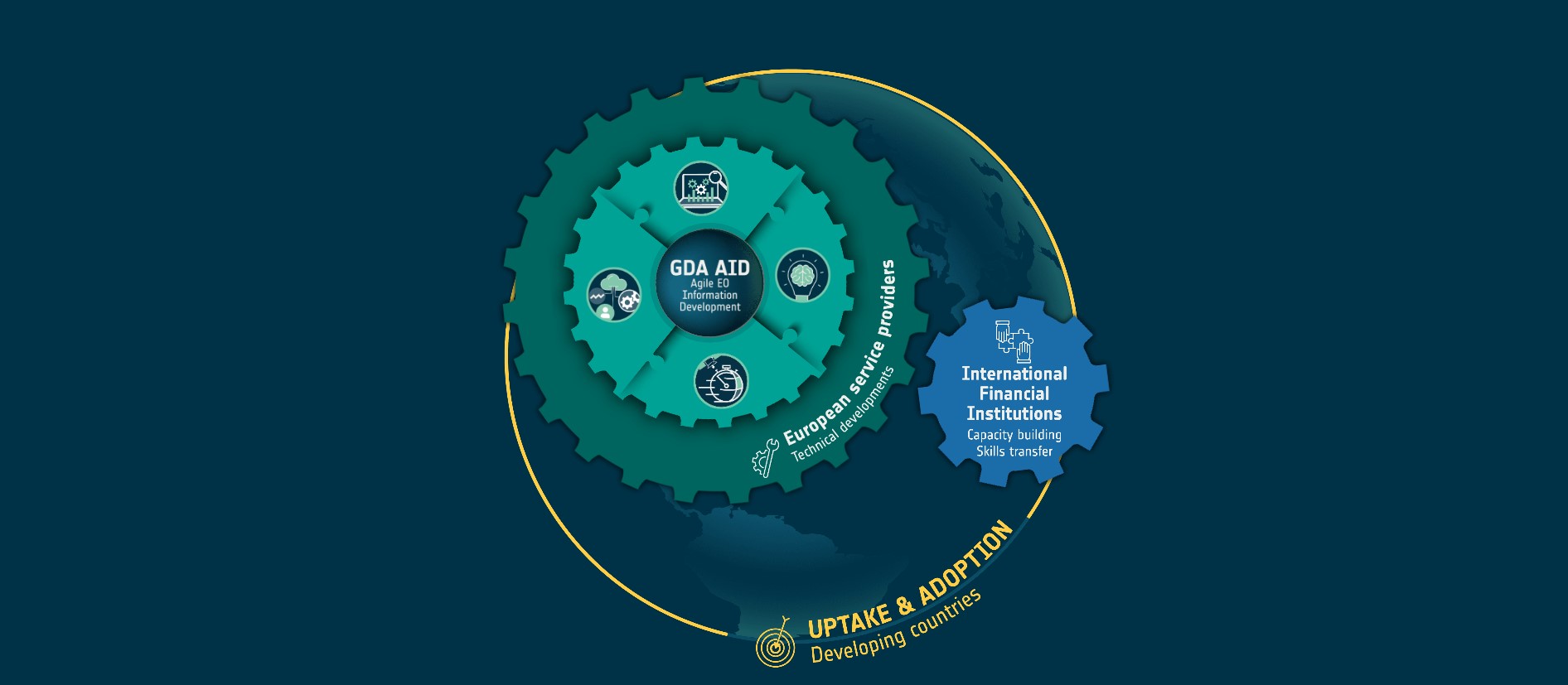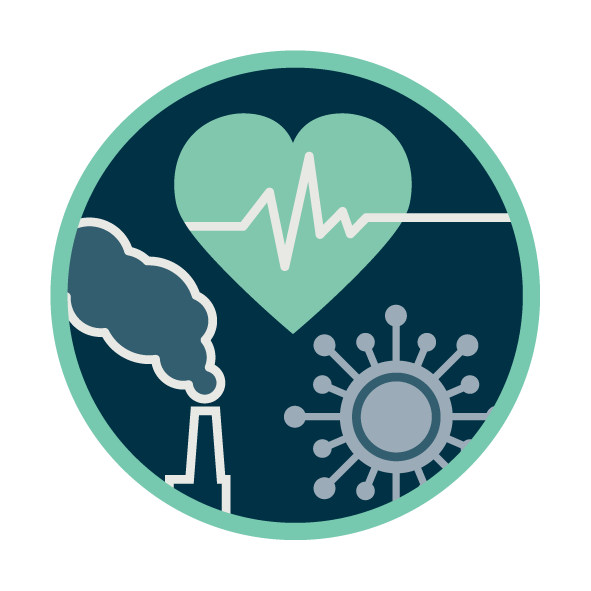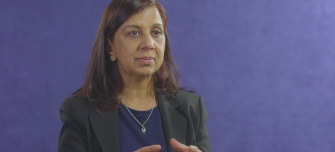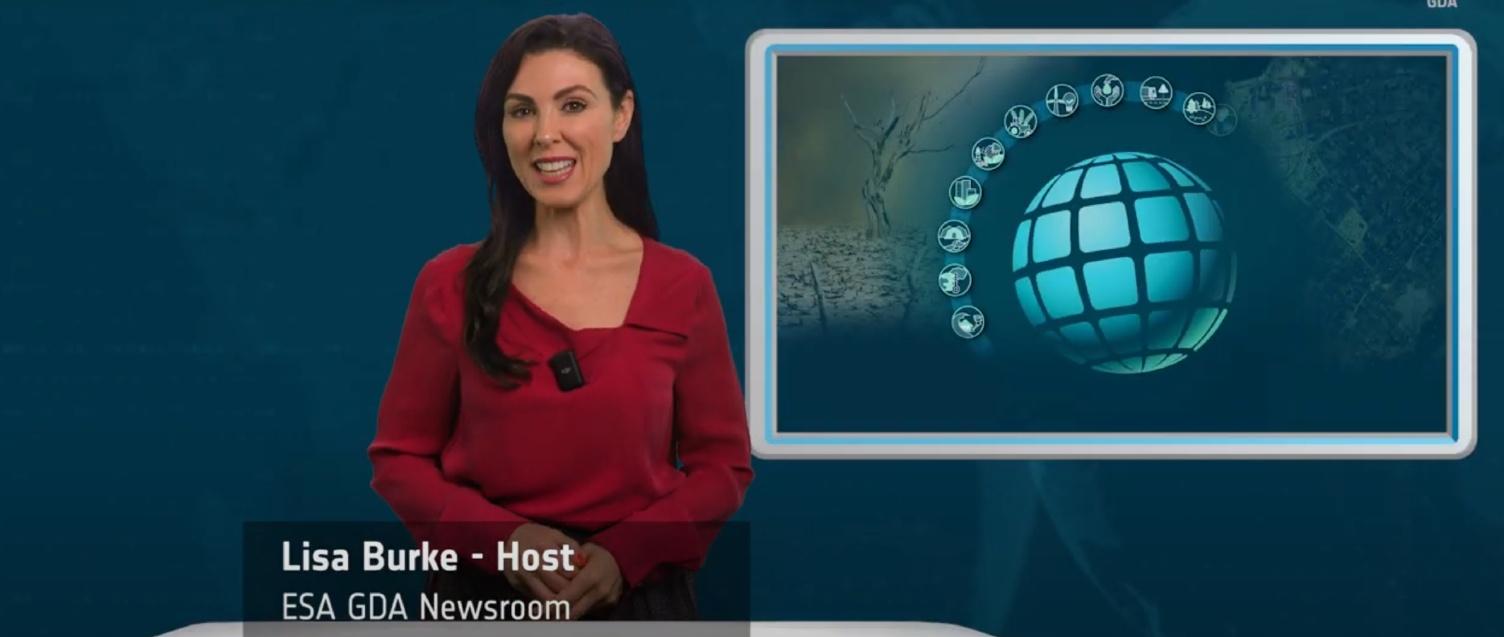ABOUT GDA
Our Mission
Our Mission is to accelerate impact by fully capitalising on the power of satellite Earth Observation (EO) in international development assistance operations.
To achieve this mission, the GDA programme focuses on targeted Agile EO Information Development (GDA AID) applied to thematic priority sectors. These developments are complemented by innovative cross-cutting approaches in user-oriented software and analytical tools development (GDA APP), flexible EO development assistance co-financing (GDA FFF), knowledge management and capacity building (GDA ABC), and a dedicated action on programmatic monitoring, evaluation and impact assessment (GDA M&E).
Through GDA, more than $100 million has been mobilised from both space and development finance resources, dedicated to mainstreaming EO in operational development activities.
Key Numbers
These key numbers are continuously being updated and reflect the current status of discussions and programme implementation.
65
countries supported
124
EO information development
68
IFIs projects
Who we are
The GDA programme is implemented out of the Sustainable Initiatives Office in the ESA Earth Observation Directorate. The ESA team implementing GDA consists of staff from across the directorate, with various backgrounds and expertise providing a rich and multidisciplinary approach to impactful programme implementation.

Our History
The GDA programme was brought to life by ESA Member States at the Space19+ Ministerial Council in November 2019 and is implemented in partnership with key International Financial Institutions (IFIs) – World Bank and Asian Development Bank – under the joint Space for International Development Assistance (Space for IDA) cooperation framework.
GDA therein builds on a long-standing collaboration with IFI partners starting in 2008, raising Awareness among Bank task teams and stakeholders in developing countries about the potential of EO in addressing key development challenges. That initial partnership period enabled the identification of key uses and benefits of Earth Observation in support of international development projects and programmes, notably through the early-stage realisation of small-scale demonstration projects (2008-2016), and more recently regional-scale activities (since 2016) under the Earth Observation for Sustainable Development (EO4SD) initiative.
EO4SD facilitated significant increase of development practitioners’ Acceptance of using EO services following a strategic approach to addressing the full value chain of EO integration in development assistance, i.e., through stakeholder engagement, requirements assessment, service development and delivery, and associated capacity building efforts. Under the Space for IDA cooperation framework, GDA is now capitalising on lessons learnt and the success of EO4SD, embarking on the path to full Adoption of EO in global development and realising its full potential to Accelerate Impact for developing country stakeholders.












